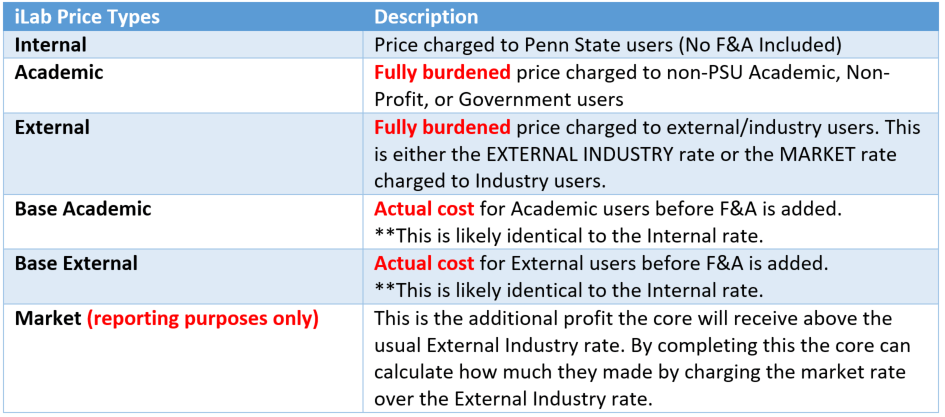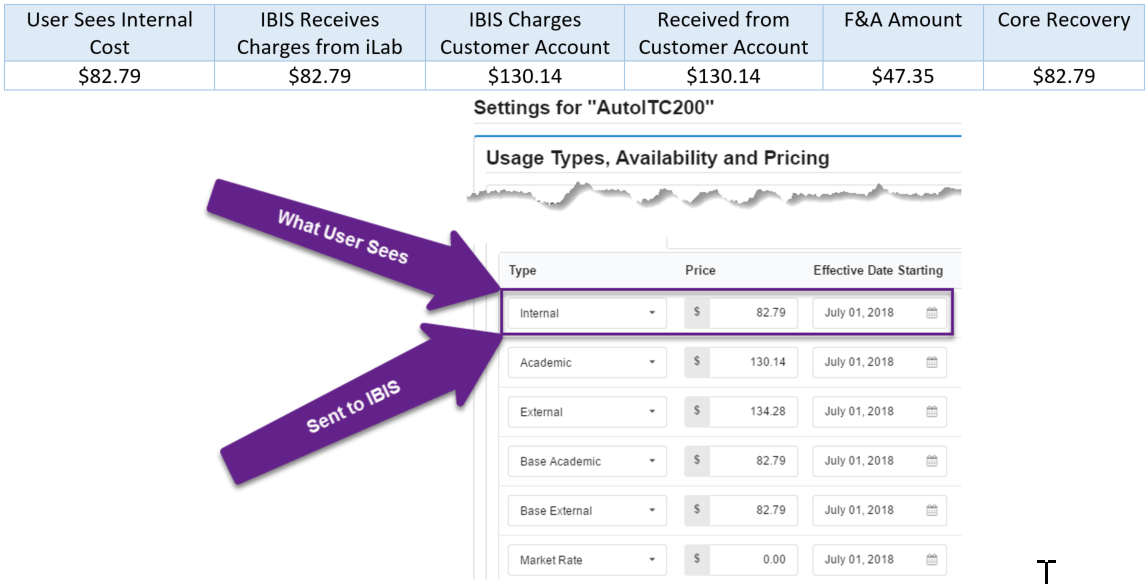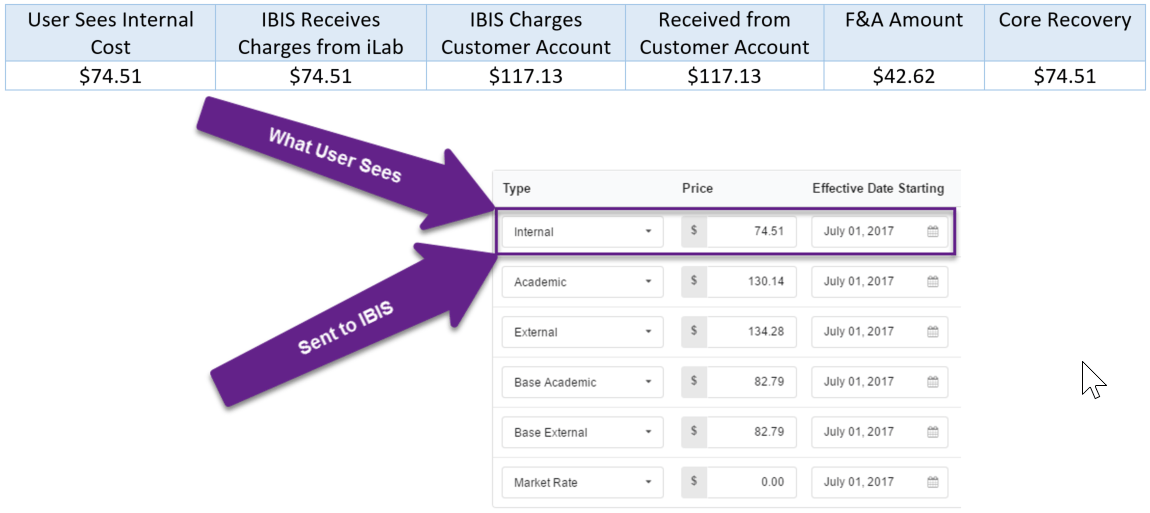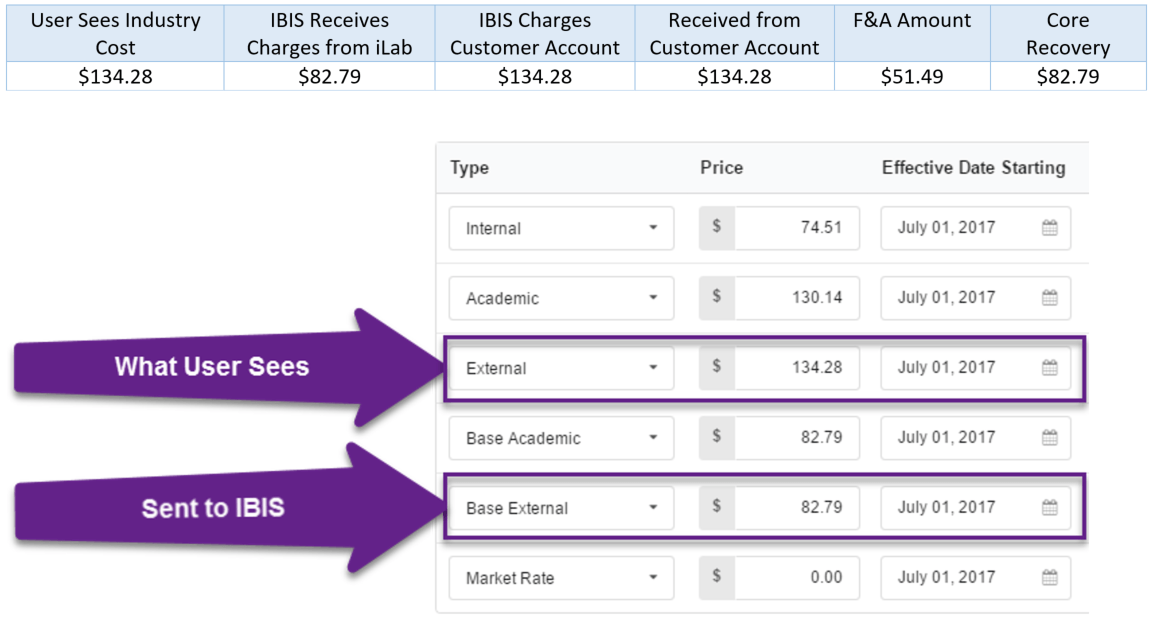When an instrument or a service is added and configured within iLab, the pricing for Internal, External Academic (Academic), and External Industry (External) users must be added as well.
When adding price types to iLab, there are very specific fields that must be entered for billing to work successfully between iLab and IBIS, Penn State’s current financial system. Below you will find all of the required and one optional price type that must be filled in.
Why are there so many price types?
For Internal Penn State users, they are aware that the price they see is prior to F&A being added. This process has not changed and will remain unchanged. PSU users are aware that when their charge is sent to IBIS, additional F&A will be added.
For all External users, there are 2 main goals when it comes to pricing:
- Show the user what they will be charged when:
- Requesting time on equipment or services
- Viewing their invoice
- Ensure the user is charged what they see when their charge is sent to IBIS.
IBIS adds the additional F&A charges when a charge is sent to it from any other system. For example:
- If F&A for an external user is 62.20%
- The fully burdened price (aka the price the user sees) = $134.28
- We only want the customer to be charged $134.28 TOTAL
- What we must send to IBIS: $82.79 (unburdened price)
The solution is to add 2 price types for Academic and 2 price types for External. These correspond to what the user sees and what is sent to IBIS.
The price types are summarized as:

Price Type Examples
This section will show examples for all of the price types. For these examples, we will show the F&A rates:

The prices based on the above rates for the example are:

Internal Price Type
The Internal Price Type is the price that Penn State users will SEE and what will be SENT to IBIS. This one is very straight forward:

If all Internal PSU users are receiving 10% of their cost subsidized, the price entered for Internal will be lower:

Academic/Government/Non-Profit (Academic Price Type)
For the Academic price type, what the user sees is the fully burdened cost based on the published F&A rates. The fully burdened cost is entered in the Academic price type field.
What is sent to IBIS is the unburdened cost. The unburdened cost is entered in the Base Academic price type field.

External Industry (External Price Type)
For the External price type, what the user sees is the fully burdened cost based on the published F&A rates. The fully burdened cost is entered in the External price type field.
What is sent to IBIS is the unburdened cost. The unburdened cost is entered in the Base External price type field.

External Industry Market Rate (External Price Type)
When using a market rate, the calculation is a little more complex. The F&A is charged on the base rate, but the customer sees the fully burdened base rate + the extra charge to bring that amount up to the market rate. For example, using the same rates above we have the following scenario:
All External Industry users are being charged at a rate of $125 for the equipment time. This is the market rate for the piece of equipment. In this example, F&A is charged to the base rate of $82.79, but the user cost is the market base rate of $125.00 plus F&A on the $125 making the total user cost $202.75.
Market Rate (Market Rate Price Type) (OPTIONAL)
The Market Rate field is informational only and used on the Billing Report (custom report). If the core or unit does not fill in the market rate, it will be reported as zero on the report. The market rate field holds the difference between the cost that was billed to the user vs. the cost had the standard rate been used.



